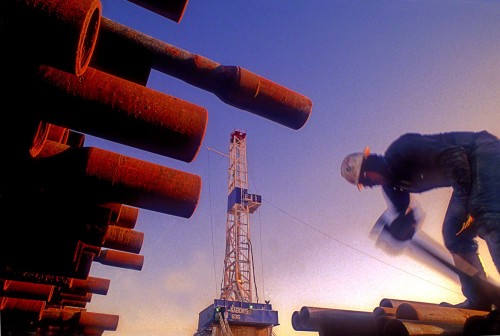I want to announce my next workshop “Autumn in France” to be next October 2nd. It will be in Bordeaux, Dordogne, and Toulouse. If you go to the top of my blog and click on the link, you can read the description. Join me for a great visual experience, seeing places that few people won’t ever be able to.
Depending on how you look at it, shooting in winter can be fun, or not so much fun, as is the case when I shot for a drilling company’s annual report to their stockholders.
I was sent to Wyoming in February to shot on and around one of their deep drilling wells. I had often shot in cold weather, but I was not mentally prepared to shoot when the wind chill made it minus 20 degrees Fahrenheit. Needless to say that it was a real eye opener.
In the old days, if I were going to be shooting outdoors for an extended amount of time, I would take my cameras and have the lubricants taken out so they wouldn’t freeze up on me. In the digital era, here’s a couple of tips that will save you a lot of grief if your camera gets damaged because of the extreme cold.
I’ve often given this advice to students of mine that take my online class with the BPSOP and live in cold climates…Russia for an example. The same goes for people that take my “Stretching Your Frame of Mind” workshops that go back to their cold countries; again, Russia and Sweden come to mind.
The big problem is the batteries. Cold weather will drain them pretty quick, so always keep a fully charged extra one where it’s warm.The best thing you can do is keep your camera next to your body that’s hopefully being protected by extreme weather clothing. I wear special long underwear that’s made especially for below-zero temperatures. I have one camera set up with the lens I’m going to use and I keep it around my neck between my chest and the down vest and coat. I wear gloves that I can remove the tips around my fingers when it’s time to click the shutter. They really come in handy when you’re carrying an aluminum tripod around…btw, it would be a real good idea not to lick one of the tripod’s legs to see what happens!!!
I try to pre-visualize my composition ahead of time to minimize the camera’s exposure to the elements. When I got it framed in my mind I bring out my camera, attach it on the tripod (using my Sachtler quick release) and shoot. I then take it off and put it back next to my chest.
Keep your camera dry as condensation is not going to be your friend. Moisture that gets inside your camera can cause extensive damage. When your done shooting, and if at all possible, warm your camera up slowly. Those silica gel packets that you usually throw away can really come in handy if you use a large plastic bag to keep the camera in.
Try not to breath on our lens. It could create lens-frost that could permanently damage your lens. Keeping a filter on it will give it protection, and keep a lens cap on it when not in use.
The best tip of all is to have a cup of coffee with some Hennessy XO generously mixed in with it waiting for you when you get back home.
🙂
Visit my website at: www.joebaraban.com and follow me on Instagram. Check out any workshops at the top of this blog, and come shooting with me sometime.
JoeB





